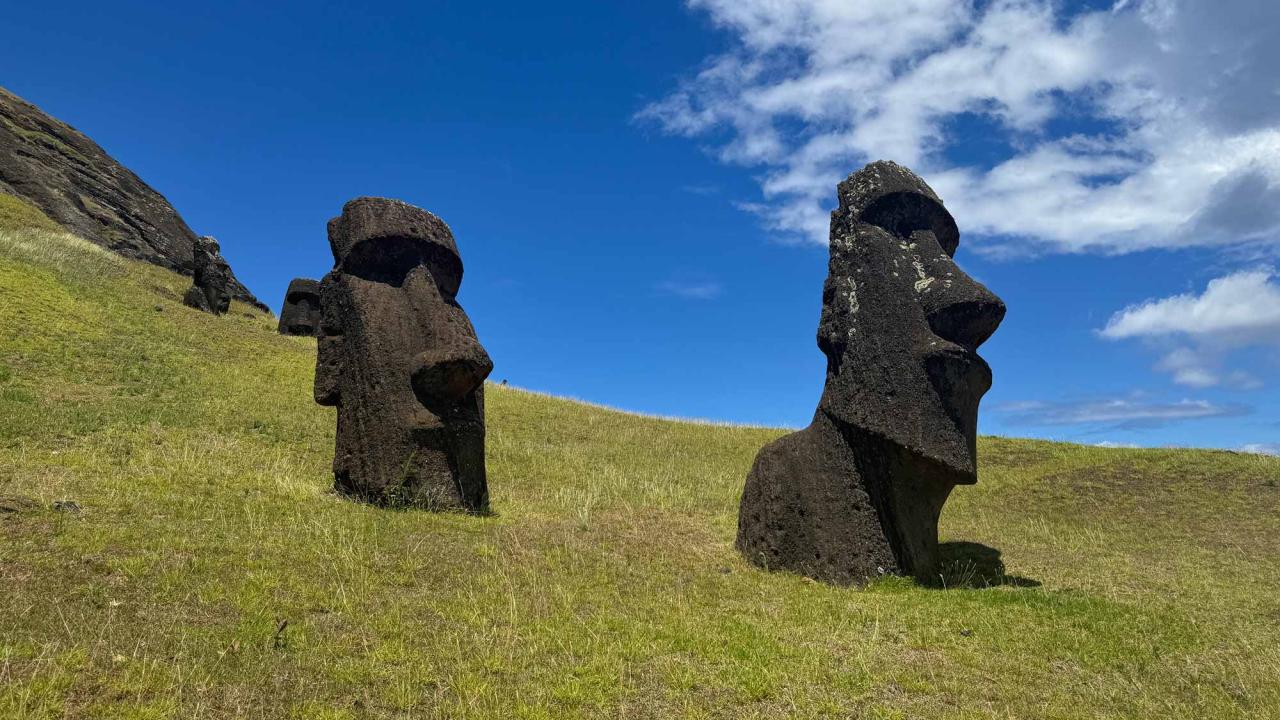When drug breakthroughs happen, the medical community rejoices. But some people can be left behind. Case in point: Rapamycin. Now a UC Davis professor is investigating how to bring back the benefits of a revolutionary drug to the people who were there from the beginning.
Rapamycin is a natural chemical produced by bacteria, and its discovery in 1964 spawned a scientific revolution. Derivatives are used to prevent organ transplant rejection and treat cancer – and generate upward of $400 million in annual sales for pharmaceutical companies. Rapamycin is also used by scientists around the world in research that may yield treatments for many other conditions, too, perhaps even aging.
But Ted Powers, a professor of molecular and cellular biology, is drawn to a different aspect of this blockbuster drug: its chance discovery from a soil sample collected on the remote Pacific outpost of Easter Island, or Rapa Nui, by Canadian scientists on a medical expedition.
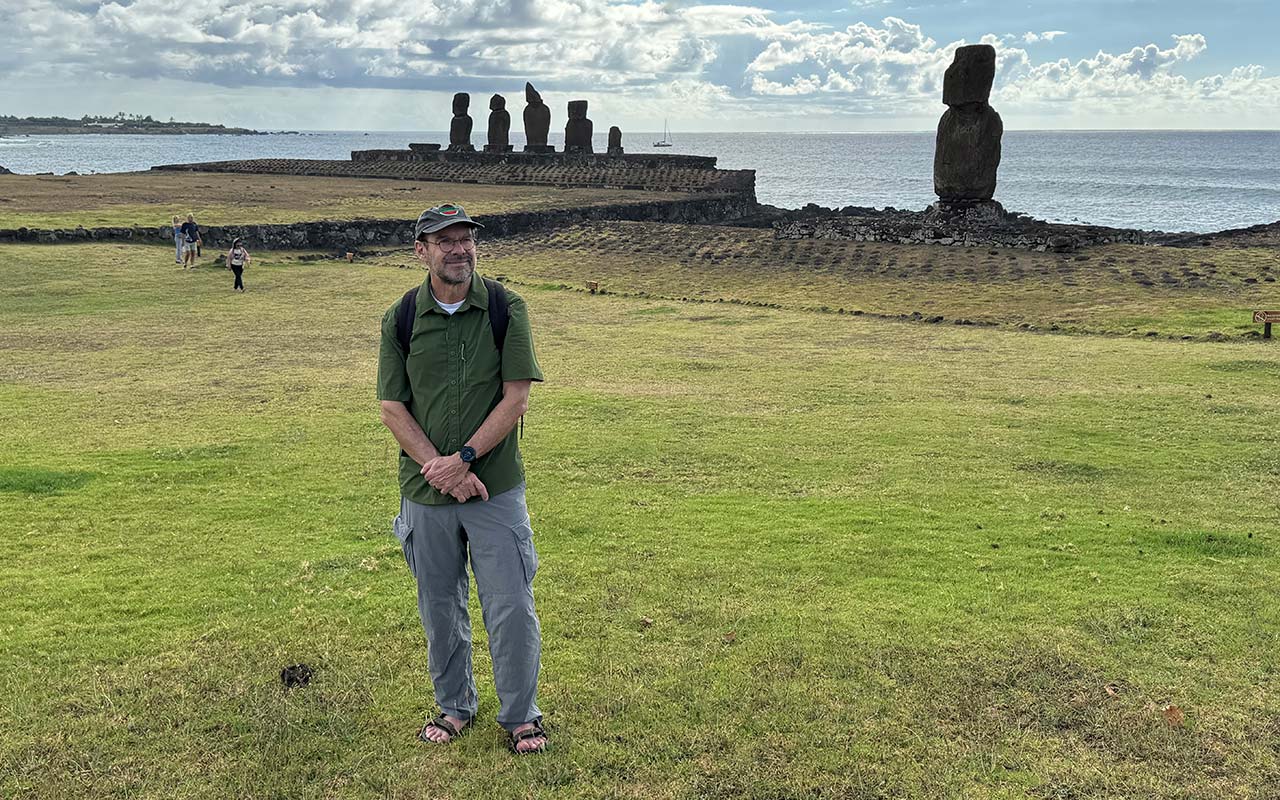
Today, Powers is mindful that even as rapamycin fuels scientific careers and innovations across the Western world, these developments have not reached the people of Rapa Nui. “I would like for the scientific community to give something back,” he said.
He hopes to forge lasting connections between UC Davis and the people on the island. “The important thing is to start a dialog,” he said, “to listen to what the Rapa Nui hope to achieve and work with them.” He added that a relationship between the university and the Rapa Nui could lead to improved agriculture, education and perhaps medical care on the island — and bring students to study at UC Davis.
To this end, Powers is collaborating with Father Francisco Nahoe, a Franciscan friar, Roman Catholic priest and native Rapa Nui scholar who teaches at Zaytuna College in Berkeley, California. Nahoe has spent years advocating for his community, including efforts to repatriate the remains of Rapa Nui ancestors from museums and universities across North America, and return them to the island.
Ultimately, Powers has a vision to change a dynamic that has played out many times over the past century of biomedical research.
Discovering a hidden history
Powers was a postdoctoral fellow at UC San Francisco in 1998 when he started using rapamycin to study the TOR (“target of rapamycin”) signaling pathway in yeast cells. He was looking at how yeast regulates the growth of ribosomes, the cellular factories that assemble proteins. Over the years that followed, he frequently attended meetings where researchers presented their own work with rapamycin, often beginning with a cursory mention that the drug was originally found on Rapa Nui.
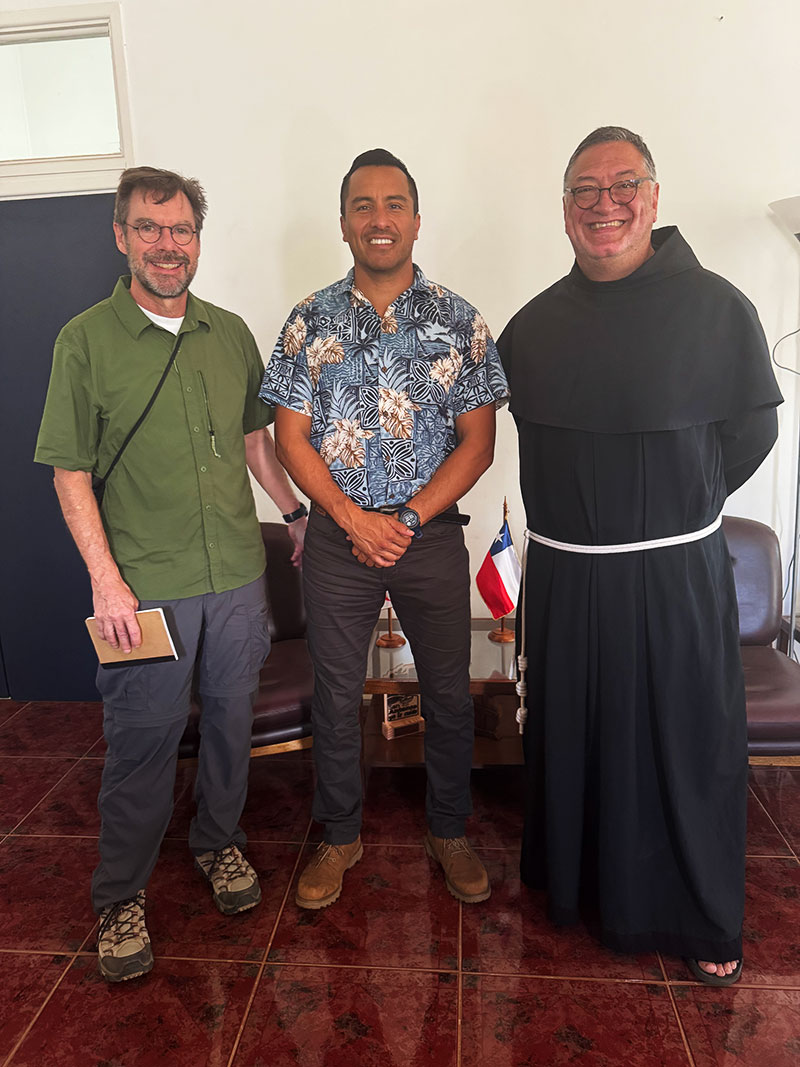
When the murder of George Floyd brought patterns of injustice to the forefront of public discourse, Powers reconsidered the relationship between rapamycin and his field. At that same time, Powers was supervising a graduate student as she prepared to teach a medical ethics class at UC Davis centered on The Immortal Life of Henrietta Lacks. The book investigated the origins of HeLa cells — which have been used in biological research worldwide for the past 75 years — first harvested in 1951 from a young black woman dying of cervical cancer. Lacks’s family did not consent to that harvest and never knew that millions of pounds of these cells were grown in incubators around the world.
Powers questioned whether the benefits of rapamycin’s discovery could go back to the place where the drug originated. Then he read a little-known book published several years earlier by Jacalyn Duffin, a hematologist, medical historian and professor emeritus at Queens University in Ontario.
That book, Stanley’s Dream, told the story of the Medical Expedition to Easter Island (METEI), in which a Canadian team sailed to the island and surveyed the health of the people there, in 1964-65.
Rapa Nui was still isolated at the time. “There was a single ship that went there once per year from Chile,” some 2,300 miles to the west, said Duffin. “It would bring supplies and take away the year’s crop.”
As physicians and nurses examined hundreds of islanders, a microbiologist named Georges Nogrady rode around the island on horseback collecting soil samples. In a makeshift laboratory, Nogrady inoculated samples of dirt onto petri dishes, to grow the microbes that they contained.
METEI had an overall purpose. An airport was about to be built on the island, and the group intended to return a few years later to see how that connection with the outside world impacted peoples’ health and diets. Though that second visit never happened, Nogrady recorded one interesting observation: When he dropped a speck of his soil bacteria onto a petri dish of growing yeast, the fungus died. The bacteria was producing a chemical – an unknown antibiotic – that killed the yeast. This small discovery marked the beginning of a scientific revolution.
A blockbuster drug – from dirt
Back in Montreal, scientists isolated the responsible bacterium (later named Streptomyces hydroscopicus) and purified the chemical, which they named rapamycin, in honor of the island. Rapamycin didn’t just eradicate fungus. It also halted the growth of some human cancer cells. And it pacified T-cells – white blood cells involved in inflammatory conditions, such as organ transplant rejection.
Those scattered discoveries gradually coalesced into a larger insight: rapamycin killed and subdued cells by targeting a previously undiscovered biological pathway — a major control hub, common to all plants, fungi and animals, which cells use to regulate their growth and division. And importantly, rapamycin provided biologists with a potent tool for studying this newly discovered pathway.
Wyeth, the company that isolated rapamycin from the bacteria, was eventually sold to the pharmaceutical giant Pfizer, which in 1999 gained approval from the Food and Drug Administration to sell a derivative of rapamycin, called sirolimus, for the prevention of kidney transplant rejection. Derivatives of rapamycin have since gained FDA approval for treating certain cancers.
The consciousness of a scientist
To say the drug was stolen from the island, or its people, wasn’t exactly true, according to Powers. In an essay published in 2022, he acknowledged that the people of the island weren’t aware of the chemical — and they weren’t using the bacteria as a medical treatment. And S. Hydroscopicus has also turned out to inhabit soils in other parts of the world. It easily could have been discovered in some other location.
Duffin pointed out that the Canadian scientists who visited Rapa Nui in 1964 were well-behaved for that time period — the indigenous people had already spent two centuries resisting colonial sailors who spread smallpox and repeatedly attempted to subjugate them. In fact, the Canadian visitors actually prevented the island’s mayor from being captured by the Chilean authorities during a political crackdown, which may have helped the Rapa Nui gain full Chilean citizenship rights a few years later.
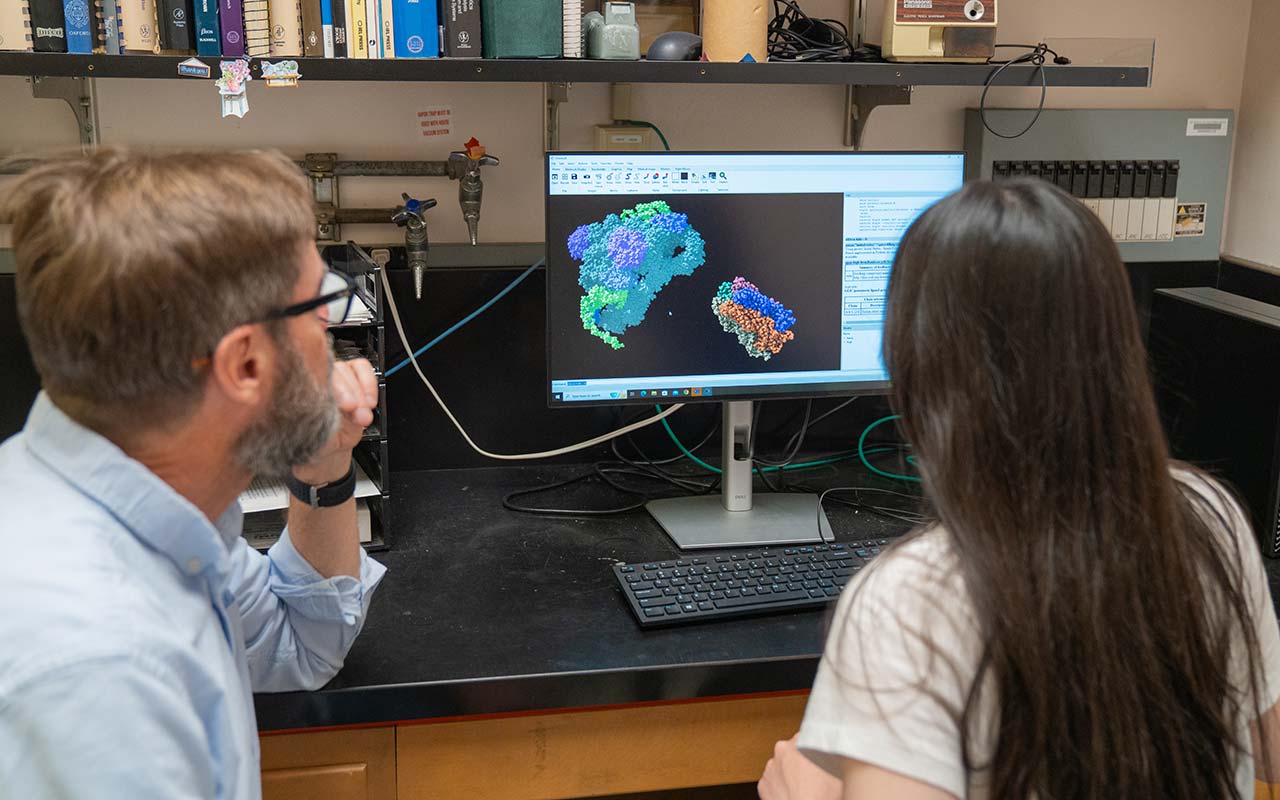
Still, Powers remained interested in making a connection with the island and its people. In 2023 and at Duffin’s suggestion, he reached out to Nahoe, who has dozens of relatives still living on the island.
This past January, Powers traveled with Nahoe to Rapa Nui, where he met with the island’s mayor, the governor and many other people, including a young couple farming organic lettuce for commercial sale, and Dominique Ziech, an American-born biotech researcher now married into the community, who established an English academy on the island where she teaches language and science.
Building a bridge across an ocean
Based on those initial discussions, Powers said he saw an opportunity to provide better facilities for teaching biology to Rapa Nui children. He would also like to forge a collaboration with UC Davis to innovate farming practices on this 63-square-mile speck of land, with limited fresh water, which sits 1,290 miles from the nearest other inhabited island, and is currently home to more than 6,000 inhabitants.
To support these goals for increasing the island’s self-sufficiency, some Rapa Nui students might spend time studying at UC Davis. Powers has also met with the UC Davis Chile Life Sciences Innovation Center — a satellite campus in Chile, the South American nation that still governs the island — for possible collaboration.
Powers self-funded his first trip to Rapa Nui, but a recently awarded Seed Grant for International Activities from UC Davis Global Affairs will fund the next steps. These will include a virtual conference this summer, bringing together UC Davis faculty, a broader group of rapamycin-TOR researchers, and the Rapa Nui community, to explore opportunities for collaboration. Those potential collaborations could then be further explored during a second visit to the island later this fall.
“This will require a long-term commitment,” said Powers. “We will need funds and resources that we don’t yet have.”
Reclaiming history
Rapa Nui is famous for its hundreds of moai – basalt statues weighing up to 95 tons that were somehow carved, transported and erected across the island. Around 1500, the building of moai suddenly stopped and the island’s society underwent a period of tumult. Some modern observers suggested that this happened because humans damaged the island’s ecosystem and depleted its natural resources – triggering their own decline.
Nahoe said that for a long time, outsiders associated the island with this myth of societal collapse. But these days, he said, he sees a different narrative emerging. And those massive statues may not be the most remarkable accomplishment of the Rapa Nui people.
The people who first arrived at Rapa Nui around 1200 AD represented the final stage of an epic expansion of humanity. New advances in canoe building, sailing and navigation allowed Polynesians, who had inhabited the southwestern Pacific for two millennia, to expand suddenly across the world’s most remote islands. In a mere century or two, they reached dozens of islands scattered across an area of ocean the size of North America – with Hawaii, New Zealand and Rapa Nui sitting at the furthest extremes. Rapa Nui was by far the smallest of those three, with a limited ecosystem. The people who sailed there were probably stranded upon arrival, forced to adapt to life on a tiny island that had no trees suitable for building long-distance canoes, with no means of departure. Adapting wasn’t easy.
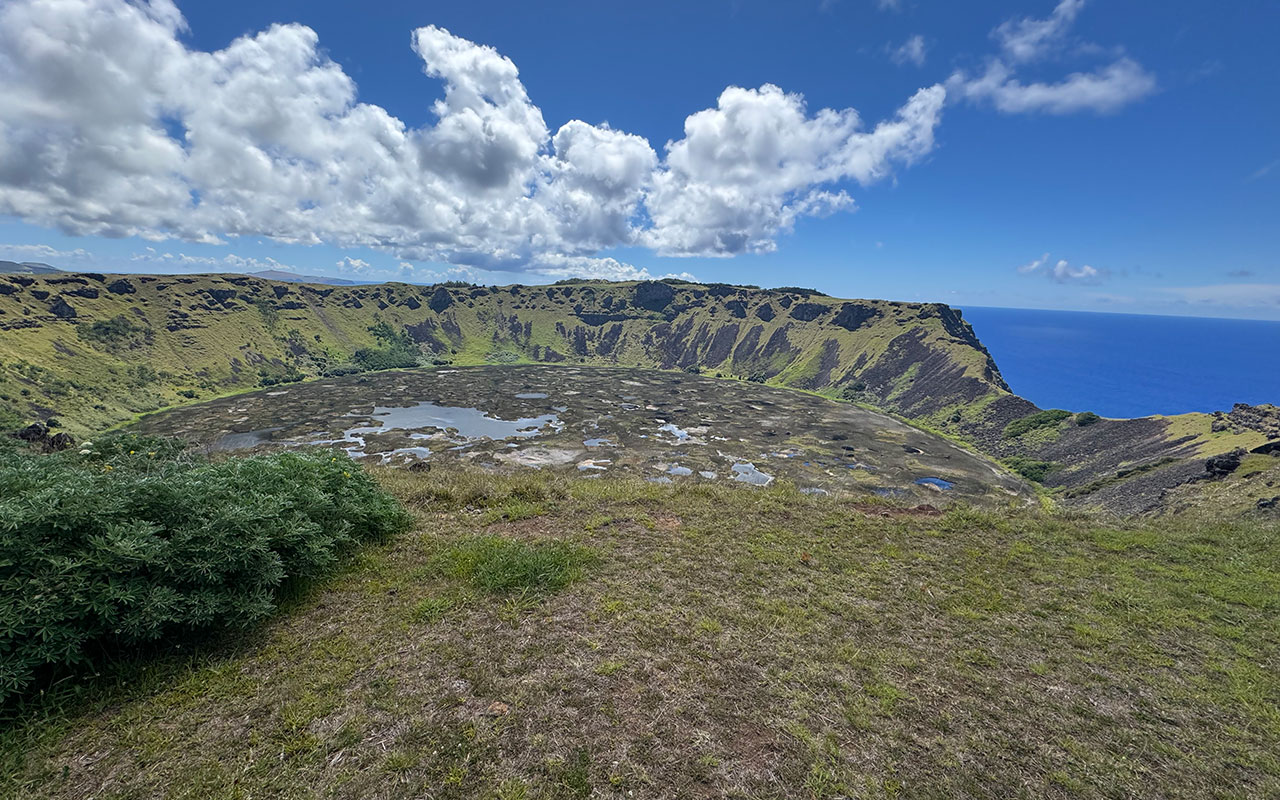
Some researchers now believe that the societal upheaval and the end of moai building happened, at least in part, because of the Little Ice Age, a major climate event across much of the planet, which may have caused drought on the island, constricting its supply of fresh water to a single pond near its southern tip. The Rapa Nui survived that bottleneck by reinventing their agricultural system.
Nahoe’s ancestors were among those survivors. When Peruvian raiders kidnapped at least 1,700 Rapa Nui into slavery in the 1860s, one of Nahoe’s forefathers was among those taken; he was also among the 15 or so who returned alive a few years later. He then survived the smallpox epidemic that followed. It shrunk the island’s population from several thousand in 1722 down to 110 in 1877.
It’s a history of strength and adaptability. Nahoe pointed out that even though few Americans know of rapamycin, it’s a household name and a point of pride on Rapa Nui, where locals, hearing this distant tale from visiting archeologists and biologists absorbed it into their local lore. “It’s a remarkable story,” he said. “God willing, rapamycin will do a lot of good in the world, and its name will be associated with the island.”
If Powers and Nahoe have their way, then the Rapa Nui themselves — epic voyagers, re-inventers and survivors — will carry that message into the wider world.
Powers’ research on the TOR cellular signaling pathway is funded by the National Institutes of Health and by the UC Davis College of Biological Sciences, Department of Molecular and Cellular Biology. Funding for outreach to Rapa Nui is provided by a Seed Grant for International Activities, from UC Davis Global Affairs.
